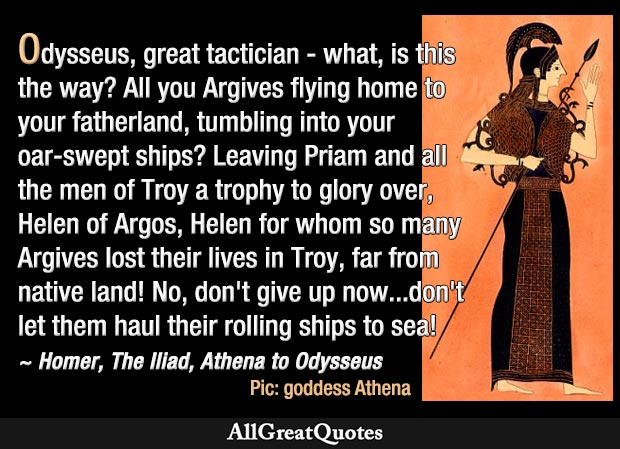But circling the other city camped a divided army
gleaming in battle-gear, and two plans split their ranks:
to plunder the city or share the riches with its people,
hoards the handsome citadel stored within its depths,
But the people were not surrendering, not at all.
They armed for a raid, hoping to break the siege –
loving wives and innocent children standing guard
on the ramparts, flanked by elders bent with age
as men marched out to war. Ares and Pallas led them.
both burnished gold, gold the attire they donned, and great,
magnificent in their armor – gods for all the world,
looming up in their brilliance, towering over troops.
And once they reached the perfect spot for attack,
…both armies battled it out along the river banks –
they raked each other with hurtling bronze-tipped spears.
And Strife and Havoc plunged in the fight, and violent Death
now seizing a man alive with fresh wounds, now one unhurt,
now hauling a dead man through the slaughter by the heels,
the cloak on her back stained red with human blood.
So they clashed and fought like living, breathing men
grappling each other’s corpses, dragging off the dead.
– Homer
The Iliad, Book 18, lines 593-605, 621-628. The second city featured on the massive shield of Achilles forged by Hephaestus is an extended metaphor for the embattled city of Troy, besieged by invading Achaeans. The scenes described foreshadow the Trojans leaving the city to fight the Achaeans between their shores and the city. Also foreshadowed is Achilles killing Hector and mistreating and dragging his body behind his chariot – "hauling a dead man through the slaughter by the heels." On the shield the god Ares and goddess Pallas Athena play a role in the fighting, he on the Trojan side and she supporting the Greeks.

